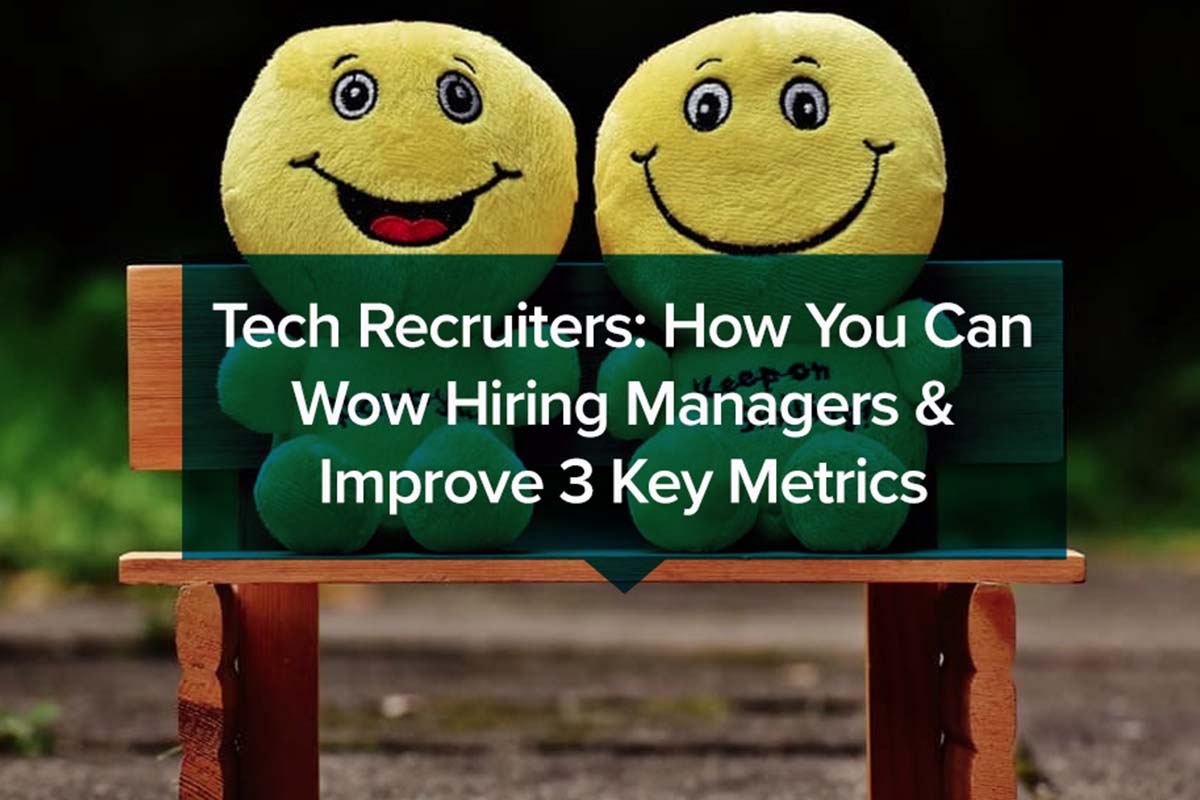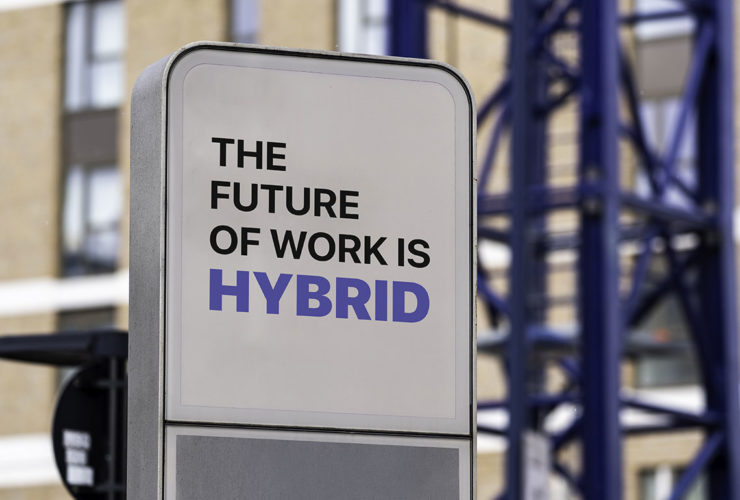The top three metrics tech recruiters use to measure success in their roles, according to LinkedIn’s Global Recruiting Trends 2017 report, are:
- The length of time new hires stay at the company
- Time to hire: the time it takes to fill a job requisition
- Hiring manager satisfaction
But with many studies finding that around 50% of new hires prove to be duds within the first 18 months, these metrics can look mediocre or even quite bad. For tech recruiters, a great way to simultaneously bolster all of these metrics is to focus on giving IT hiring managers an outstanding return on interview.
Return on interview—A hiring performance measure that evaluates the effectiveness of an interview and the efficiency of the interviewing process for the candidate, tech recruiters, hiring manager and hiring company.
Giving IT hiring managers an outstanding return on interview means:
- The hiring process runs efficiently (short time to hire)
- Only technically qualified candidates make it to the final interview stage (successful hires, satisfied hiring managers).
Here are seven steps that will help you accomplish this key recruiting goal.
- Ensure that the hiring manager provides a complete job description. Start with the basics. A quality job description is the foundation for finding a high-quality hire. To properly evaluate and filter candidates, you must know the skills, competencies and experience that are necessary to perform the job effectively.
- Have a detailed intake session with the hiring manager. You and the hiring manager need not only to be on the same page about the job description, but also about the process, timeline, and each other’s roles and responsibilities. Recruiting expert Tiffany Kuehl has said, “The initial conversation you have with your hiring manager is the most critical step in the recruitment process. In my experience, anytime there has been an issue with a search, it could be traced back to the strategy session. The success, or failure, of your search depends on how it begins.”
For some best practices, check out Kuehl’s intake checklist of what tech recruiters should do before, during and after an intake session with a hiring manager.
- Filter resumes to align with job requirements emphasized by hiring manager. In most cases, filtering resumes mean setting up auto-filtering in an applicant tracking system to screen out candidates who don’t meet the job requirements. But if you’re hiring for a smaller company, such as a startup, this may mean going through resumes one-by-one to weed out unqualified candidates.
- Perform other pre-screening activities. Take the time to further filter your candidate pool. It will save you time in the next step (fewer candidates to meet with), and will ultimately help you deliver better candidates. A few possible pre-screening activities include:
- Validate candidates’ identity and experience via social media. This includes LinkedIn, but when hiring for IT roles, also examine candidates’ contributions on sites such as Stack Overflow and GitHub.
- Have candidates undergo personality/work style assessments.
- Use automated reference checking. (We recommend this as a pre-screen rather than later in the process. Why spend time talking to candidates who will later be filtered out due to lackluster references?)
- Validate candidates’ IT certifications. Examples of certifications to check include Microsoft, Cisco, AXELOS, Red Hat, CompTIA, PMI and ZMware.
- During initial conversations with candidates, evaluate for technical fit.
Even if you don’t have the necessary IT background to fully evaluate candidates’ technical skills, you can still help filter candidates during your initial conversations with them. Two ways to do this are:
- Ask relevant technical concept questions that have right/wrong answers. You don’t have to come up with the questions yourself; get the IT department or the hiring manager to provide them. That the questions have right/wrong answers is critical—you can evaluate candidates’ answers even if you don’t have knowledge of the concepts. (Note: you could do this as a pre-screening step by incorporating them into a computer-based technical assessment.)
- Have candidates discuss their older project experience. This helps uncover resume lies. Most candidates—including most fraudulent candidates—are prepared to discuss recent projects, but aren’t usually prepared to answer questions about projects from several years ago. Asking questions about older project experience helps reveal whether candidates are all they claim to be.
- Have candidates undergo rigorous technical interviews.
Technical interviews are a critical step in the tech hiring process and have been shown to be as much as 5.5 times as predictive of future job performance as traditional interviews. Our post “9 Keys for Highly Effective Technical Interviews” lays out many technical interview practices, including:
- Interviewers need relevant technical experience and should have technical interviewing experience.
- Questions need to be challenging and behavioral-based (as opposed to theoretical questions) so that candidates’ experience can be evaluated.
- Interviews should be standardized so candidates are evaluated on the same basis.
To provide an outstanding return on interview for hiring managers, it’s important to point out two other technical interviewing best practices: (1) technical interviews should be recorded on video, and (2) candidates should be scored on a common rating scale based on the job requirements and preferences from the job description. Both the videos and reports are important for the final step: candidate delivery.
- Deliver your candidate shortlist, along with technical interview videos and reports.
Once you’ve reviewed the candidates and confirmed that all meet the job requirements, it’s time to deliver your candidate shortlist to the hiring manager. As a result of the candidate filtering in this process, you might find that the shortlist is smaller and more refined. Instead of delivering a top 10 or 15, for example, you might deliver a top five or even a top three, and with more confidence in your recommendations.
When you deliver the shortlist to the hiring manager, also deliver the videos and reports from the technical interviews. They are excellent resources for the hiring manager to use when making the ultimate hiring decision, and also give the hiring manager confidence that you’ve delivered candidates who have the necessary technical skills and experience.
The Final Interview(s)
After you perform the seven steps above, the remainder of the hiring process is out of your hands. However, the work you’ve done to provide a high-quality shortlist will help make the final interview(s) more successful, leading to better hires. The benefits include:
- Hiring manager can focus on non-technical areas during candidate interviews. Because the hiring manager knows that candidates have the required technical skills, he or she can look to gain insights about other job-relevant factors. How are the candidates’ communication skills? How do they present themselves? How would they fit within the culture of the team? These factors can impact how successful a new hire is and how long he or she stays with an organization.
- Bad hires become less likely. Surveys show that hiring managers often decide whether they want to hire candidates with 10-15 minutes. This can lead to bad hires, as they often hire for likeability—not skill. But when all the candidates are technically qualified, these quick decisions, while not ideal, are less likely to result in bad hires.
- Hiring manager can shorten interview process, or go more in depth. Because the hiring manager can view the technical interview videos, he or she may decide that just one interview, rather than multiple rounds of interviews, is enough to make a hiring decision. This can speed up time to hire—sometimes even by a week or more—and lessen the demands on the hiring manager’s time. Alternatively, the hiring manager can opt for more in-depth interviews. One possibility is performing technical case studies, in which candidates are given real work scenarios, and then asked about the actions they’d take and what they’d expect the results would be.
Tech recruiters benefit, too. Not only do your top three evaluation metrics improve, but you also achieve a strong working relationship with the hiring manager—a key for sustained recruiting success.







